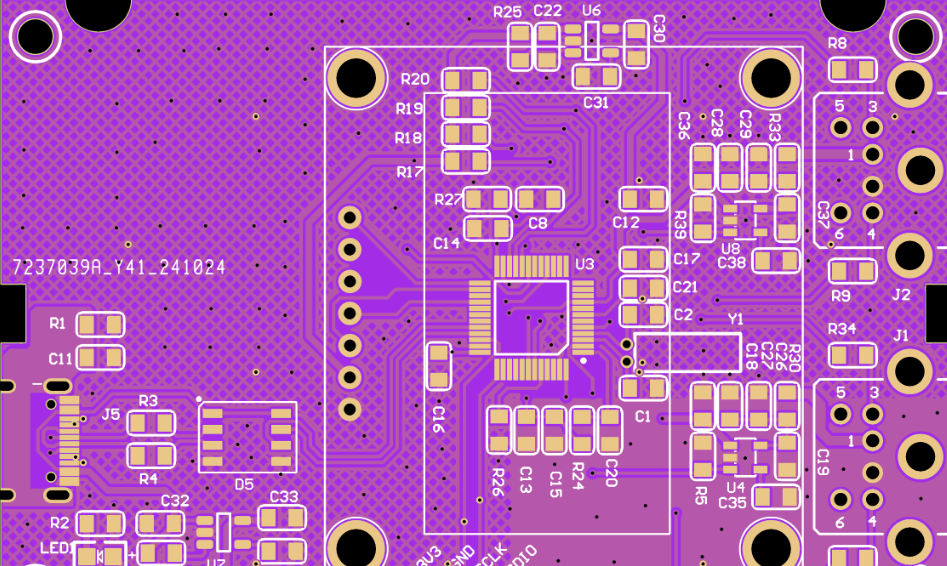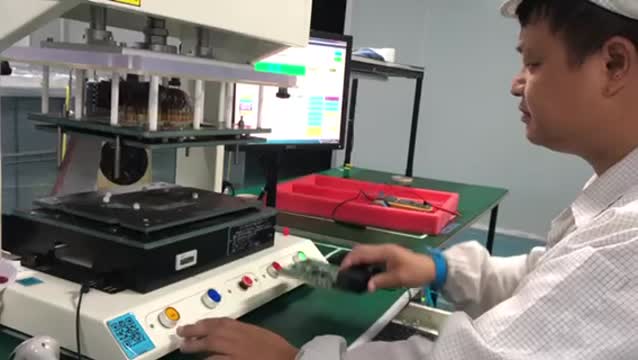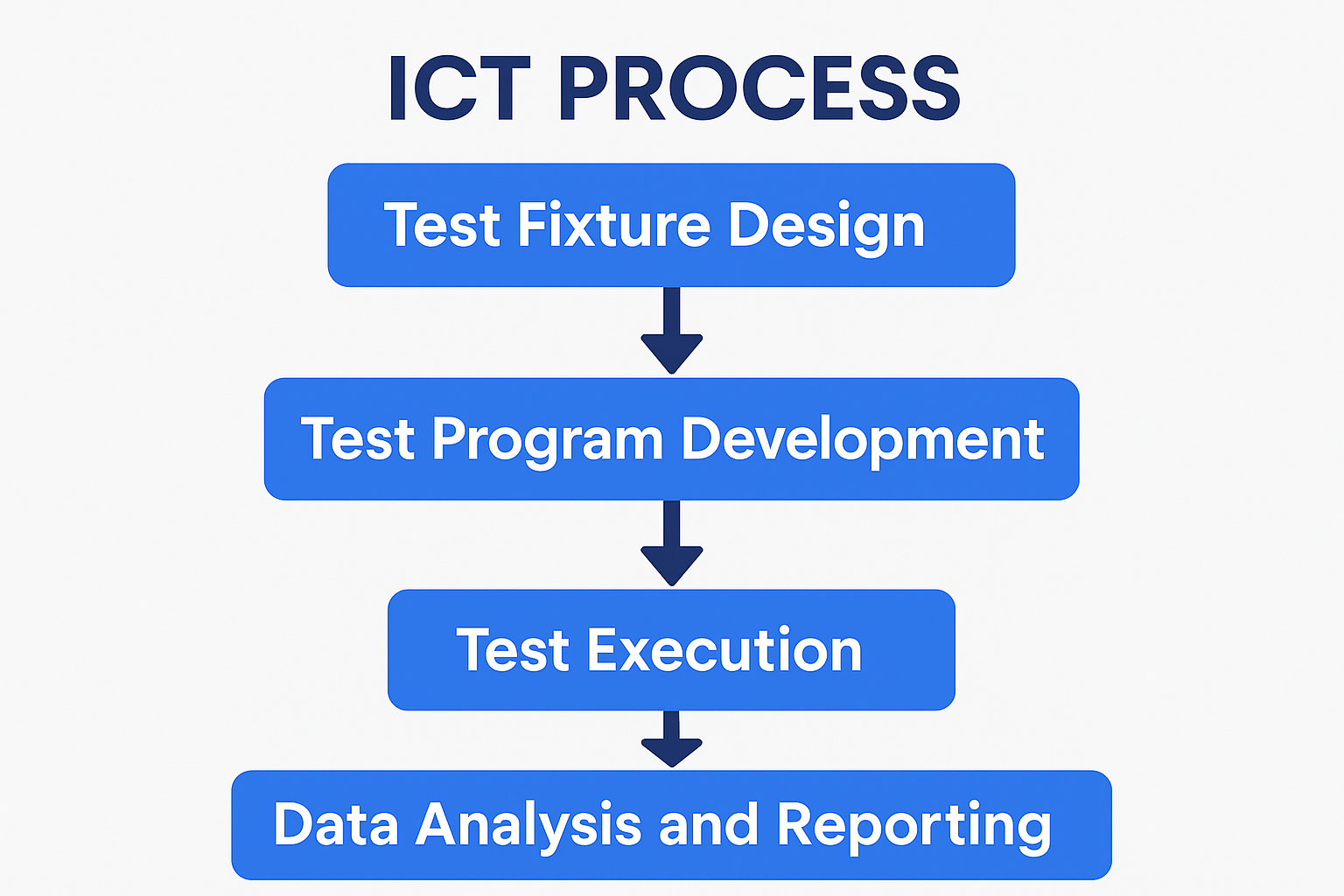In the fast-paced world of electronics manufacturing, ensuring top-notch product quality is a must. One of the most effective ways to achieve this is through In-Circuit Testing (ICT) using specialized test fixtures. But what makes ICT so vital? Simply put, ICT test fixtures allow manufacturers to detect faults early, improve product quality, and reduce repair costs by testing individual components on a printed circuit board (PCB) before final assembly. In this blog, we’ll dive deep into the advantages of ICT testing and why it’s a game-changer for electronics production.
What is In-Circuit Testing (ICT) and How Do ICT Test Fixtures Work?
In-Circuit Testing, or ICT, is a method used in electronics manufacturing to test the functionality of individual components on a PCB. Unlike other testing methods that focus on the final product, ICT checks components while they are still in the circuit, identifying issues like short circuits, open connections, or incorrect component values.
ICT test fixtures are custom-designed tools that hold the PCB in place and connect it to a testing system. These fixtures use a "bed of nails" design, where numerous pins make contact with specific test points on the board. This setup allows the testing equipment to send electrical signals through the circuit and measure responses, ensuring each component works as expected.
The precision of ICT fixtures is critical. For instance, they must align perfectly with test points on the PCB, often within tolerances of less than 0.1 mm, to ensure accurate results. This level of detail helps catch even the smallest defects before they become bigger problems.

Key Advantages of ICT Testing in Electronics Manufacturing
ICT testing offers a wide range of benefits for manufacturers looking to maintain high standards in their production process. Let’s explore some of the top advantages that make ICT an essential step in ensuring quality.
1. Early Fault Detection Saves Time and Resources
One of the standout benefits of ICT testing is its ability to catch issues early in the manufacturing process. By testing components right after assembly, manufacturers can identify faults like incorrect resistor values (e.g., a 1kΩ resistor instead of a 10kΩ one) or soldering defects before the board moves to the next stage. This early fault detection prevents defective boards from reaching final assembly, where fixing issues becomes much more costly and time-consuming.
For example, detecting a short circuit during ICT might take just a few seconds and cost pennies to fix. If that same defect goes unnoticed until the final product fails, repair costs could skyrocket into hundreds of dollars per unit, not to mention the potential damage to brand reputation.
2. Improved Product Quality Through Precision Testing
ICT testing significantly boosts product quality by ensuring that every component on the PCB meets design specifications. This method can measure parameters like resistance, capacitance, and voltage with high accuracy, often within 1% of the expected value. Such precision guarantees that the final product performs reliably, whether it’s a smartphone, medical device, or automotive control unit.
High-quality products also lead to fewer returns and warranty claims. When defects are caught and corrected during production, customers receive reliable devices, building trust in the manufacturer’s brand over time.

3. Reduced Repair Costs with Proactive Defect Management
Repairing a defective product after it leaves the factory can be incredibly expensive. ICT testing helps reduce repair costs by addressing issues before they escalate. For instance, replacing a single faulty capacitor during ICT might cost less than $0.50 per board. If that capacitor causes a system failure in the field, the cost could include shipping, labor, and replacement parts, easily exceeding $50 per incident.
By investing in ICT test fixtures, manufacturers can avoid these high costs and allocate resources to innovation and growth instead of damage control.
4. Faster Production Cycles with Automated Testing
ICT systems, especially when paired with well-designed test fixtures, can test hundreds of points on a PCB in just a few seconds. This speed is a huge advantage in high-volume electronics manufacturing, where time is money. A typical ICT setup might complete a full board test in under 10 seconds, compared to manual testing methods that could take several minutes per board.
Automation also reduces human error, ensuring consistent results across thousands of units. This efficiency allows manufacturers to meet tight deadlines without sacrificing quality.
5. Versatility Across Different PCB Designs
ICT test fixtures can be customized to fit a wide variety of PCB layouts, making them suitable for different projects in electronics manufacturing. Whether it’s a simple single-layer board or a complex multi-layer design with high-density components, ICT fixtures can be tailored to match the specific test points and requirements of the board.
This adaptability ensures that manufacturers can maintain quality standards across diverse product lines, from consumer gadgets to industrial equipment.
Why ICT Test Fixtures Are Worth the Investment
While the initial cost of designing and building ICT test fixtures can be significant, the long-term benefits far outweigh the expense. Custom fixtures are often a one-time investment for a specific product run, and their ability to prevent costly defects makes them a smart choice for any serious manufacturer.
For example, a custom ICT fixture for a mid-volume production run of 10,000 units might cost $5,000 to develop. If that fixture prevents just 1% of units from failing in the field, saving $50 per failure, the total savings would be $5,000—effectively covering the cost of the fixture. For larger production runs, the savings are even more substantial.
Additionally, ICT fixtures are durable and can be reused for multiple testing cycles, further increasing their value. With proper maintenance, a well-built fixture can last for years, supporting consistent quality across countless batches.
Challenges and Limitations of ICT Testing
While ICT testing offers numerous advantages, it’s important to understand its limitations to set realistic expectations. One challenge is that ICT cannot detect all types of defects. For instance, it may struggle with intermittent faults that only appear under specific conditions, such as temperature changes or vibrations. In such cases, supplementary testing methods like functional testing are often needed to ensure full coverage.
Another consideration is the upfront cost and time required to design custom fixtures. For low-volume production or prototype runs, the expense of creating a dedicated ICT fixture might not be justified. In these scenarios, alternative methods like flying probe testing, which doesn’t require a custom fixture, might be more practical.
Despite these challenges, the benefits of ICT testing—especially for high-volume production—make it an indispensable tool for most manufacturers focused on quality.
How ICT Fits Into the Broader Quality Assurance Process
ICT testing is just one piece of the puzzle in a comprehensive quality assurance strategy. It works best when combined with other methods like visual inspection, automated optical inspection (AOI), and functional testing. Together, these approaches create a multi-layered defense against defects, ensuring that every product meets the highest standards.
For instance, while ICT excels at identifying component-level issues, functional testing evaluates the performance of the entire assembled product under real-world conditions. By integrating ICT with these other methods, manufacturers can achieve near-perfect reliability, even for complex electronics.

Tips for Implementing ICT Testing in Your Manufacturing Process
If you’re considering adding ICT testing to your production line, here are some practical tips to ensure success:
- Design for Testability: When creating your PCB layout, include accessible test points for ICT probes. This makes fixture design easier and improves testing accuracy.
- Choose the Right Fixture Type: Depending on your production volume and board complexity, select between vacuum, pneumatic, or manual ICT fixtures. High-volume runs often benefit from automated vacuum fixtures for speed.
- Partner with Experts: Work with experienced testing solution providers to design fixtures that match your specific needs, ensuring optimal performance and reliability.
- Regular Maintenance: Keep ICT fixtures in top condition by cleaning and calibrating them regularly. This prevents wear on the test pins and ensures consistent results.
- Analyze Test Data: Use the data collected from ICT testing to identify recurring issues in your manufacturing process. This feedback loop can help you refine assembly techniques and reduce defect rates over time.
Future Trends in ICT Testing for Electronics Manufacturing
As technology evolves, so does the field of ICT testing. Emerging trends include faster test systems capable of handling higher signal speeds, such as those required for 5G and IoT devices. Modern ICT equipment can now process signals at frequencies exceeding 1 GHz, ensuring compatibility with cutting-edge electronics.
Additionally, advancements in automation and artificial intelligence are making ICT systems smarter. These technologies can predict potential failure points based on historical test data, allowing manufacturers to address issues before they even occur. Such innovations promise to make ICT testing even more effective in the years to come.
Conclusion: Elevate Your Quality Standards with ICT Testing
In-Circuit Testing, supported by well-designed ICT test fixtures, is a cornerstone of quality in electronics manufacturing. From early fault detection and improved product quality to reduced repair costs and faster production cycles, the advantages of ICT testing are clear. By catching defects before they become costly problems, ICT helps manufacturers deliver reliable products that meet customer expectations every time.
Whether you’re producing consumer electronics, industrial equipment, or medical devices, integrating ICT into your process is a smart move. It’s an investment in quality, efficiency, and long-term success. With the right approach and tools, you can harness the full power of ICT to stay ahead in the competitive world of electronics production.
 ALLPCB
ALLPCB







